|
*CELEBRATING OUR SAINTS DAY
Sunday, November 3, 2013
Writers for This Unit: The African American Lectionary Team
The unit you are viewing, Celebrating Our Saints Day, is a compact unit. This means that it does not have a supporting cultural resource unit and worship unit. Instead, to enliven the imagination of preachers and teachers, we have provided scriptural text(s) that we suggest for this moment on the calendar along with a sermon outline, suggested links, books, articles, songs, and videos. For additional information, see Martyr's Sunday/All Saints Day in the archives of the Lectionary for 2011.
I. Description of the Liturgical Moment: Celebrating Our Saints Day
Reverend Lewis E. Logan III wrote for the Martyr's Sunday/All Saints Day unit in 2011:
Scott P. Richert, featured author of numerous articles on Catholic moral, social, political, and historical issues, writes that All Saints Day is a very old Christian tradition remembering Christians who have given their lives for the cause of Christ. Initially, anniversaries marked the death of individual martyrs; however, as the incidences of martyrdom greatly increased as a result of severe persecutions at the hands of the Roman Empire, local dioceses instituted a common feast day during which all martyrs, known and unknown, were properly honored. In the early centuries, this feast was celebrated in the Easter season, and the Eastern Churches, both Catholic and Orthodox, still celebrate it then. Their current date of November 1 was instituted by Pope Gregory III (731–741) when he consecrated a chapel to all of the martyrs in St. Peter's Basilica in Rome and ordered an annual celebration. This celebration was originally confined to the diocese of Rome, but Pope Gregory IV (827–844) extended the feast to the entire Church.
The term All Saints Day was coined by the Catholic Church, and we used this term as part of the unit title when we honored our saints in 2011. Our hope is that African American churches, non-denominational, denominational, and those housed in any space within any African American community of faith, will redefine this day for purposes that reflect the history and sojourn of African Americans in the Americas. For 2013, we have retitled this moment on the calendar Celebrating Our Saints Day to begin this redefining.
Today we celebrate and reflect upon Christian discipleship and martyrdom in the sense that all who live and/or die for justice, freedom, peace, and parity are saints and should be celebrated.
II. Celebrating Our Saints Day: Sermonic Outline
A. Sermonic Focus Texts: Psalm 34:22 and 1 John 3:1-3 (New Revised Standard Version)
Psalm 34:22
(v. 22) The
Lord redeems the life of his servants; none of those who take refuge in him will be condemned.
1 John 3:1-3
(v. 1) See what love the Father has given us, that we should be called children of God; and that is what we are. The reason the world does not know us is that it did not know him. (v. 2) Beloved, we are God's children now; what we will be has not yet been revealed. What we do know is this: when he is revealed, we will be like him, for we will see him as he is. (v. 3) And all who have this hope in him purify themselves, just as he is pure.
B. Possible Titles
i. Celebrate Your Own or No One Will
ii. A Charge to Keep Before We Sleep
iii. Celebrating Our Saints
C. Point of Exegetical Inquiry
In any text(s), there are words, phrases, and concepts that require significant exegetical inquiry. The combining of Psalm 34 and 1 John 3:1-3 allows for the merging of Old Testament and New Testament texts in a way that is apropos for this moment on the calendar. The selected texts allow for the mingling of the bitter and sweet and the victories and afflictions, which typify the lives of all saints. This merging also makes it necessary that preachers not preach these definitely connected passages as two homilies. The exegetical task for the preacher is to determine what themes within the texts resonate with their congregation for this moment in history and this day on the lectionary calendar. Also, when doing your exegetical work, be careful to give attention to the eschatological notions mentioned in 1 John 3:2-3.
III. Introduction
Today's Psalm and New Testament reading are combined to drive home a similar point. First, the Psalm written by David during one of his most trying ordeals tells us very clearly that the lives of all of God's children are redeemed and those whom God loves shall not be condemned. Second, through today's New Testament reading, the point is made that God loves the children of God and they have a glorious ending awaiting them—they shall be like God and see God as God is. In other words, as the old folk used to put it simply and eloquently, When the judgment day comes, you want to be on the Lord's side because that's the right side. Saints are saints first for that reason—they stood on the Lord's side. Second, they are saints because they lived in a fashion that allowed them to carry out the work of God for the least of these, under difficult and often harsh circumstances.
All Saints Day (which we are now calling Celebrating Our Saints Day) is a lectionary moment long celebrated by the Catholic Church and a few other faith communities. By name, it does not have a long history of celebration by African American Baptist, AME, AMEZ, and African American Pentecostal and Holiness faith communities. However, as a ritual, it has been done by all African American faith communities for more than a century. We have always set aside time to honor persons who have gone above and beyond to help sustain churches and the African American community. Often, these people were deacons, Mothers of the Church, pastors, and Christian educators. We have also long celebrated our public/cultural saints. These were the saints we put on our stained-glass windows. Some of us grew up seeing Frederick Douglass, Harriet Tubman, Mary McLeod Bethune, and Martin Luther King Jr. on church stained glass windows. We also named schools, churches, streets, and church groups in honor of some of these saints. Through this commentary and related material, we want to encourage churches to ritualistically honor our saints and the saints of their church and community each year, on purpose.
IV. Moves/Points
Move/Point One – One becomes a saint by suffering.
a. David didactically teaches that God will take care of his servants;
b. Those who serve God will suffer, especially those who live for others;
c. But, the Lord is always near the children of God.
Move/Point Two – God so loves saints that they are designated as God's children.
a. God's designations are what are most important;
b. Sainthood is not about being well-known, it is about being known as a child of God; and
c. The world did not know who Jesus was and typically does not know his servants today.
Move/Point Three – More shall be revealed.
a. The opponents of God have been revealed now, what believers will be is revealed later;
b. Believers shall become more like God than they are now after they see God as God really is; and
c. Because of our hope that is focused on seeing God, we have ethical and moral duties. These are the duties so faithfully carried out by our saints.
V. Celebration
With applause in our hands, accolades on our lips, and thankfulness in our hearts, we honor our saints. They are children of God and their lives show the love of God. Their names may not have been put in lights. Some have had no stories written about them. Perhaps they died financially destitute. But as servants of God, they did not live in vain. So, they shall behold God's face and be like God. We do not know when, we do not know where, but we do know that they shall behold God's face. So, in honor of their legacies, we rise to keep fighting for justice, speaking truth to power, and re-fashioning the world for the least of these. We thank God for our saints and we shall not forget them.
VI. Sights, Sounds, Colors, and Emotions in These Passages
| Sights: |
David sitting and assessing his life as an older man; saints serving food to the poor and providing clothing; saints marching for justice; saints being beaten by police; saints praying for God's deliverance;
|
| Sounds: |
The sounds of the demise of the wicked; the sounds of victory over one evil or another; the singing of the saints; saints discussing how to overcome a societal evil; the crying of those who hear that another saint has been killed; God saying, "Well done" to all who have faithfully served the Lord; the shouts of hallelujah and praise when we see God face to face;
|
| Colors: |
The white bread fed to the poor; the red blood of those who were martyred for their faith; and the white robes of saints as they stand before God and see God face-to-face;
|
| Emotions: |
The seriousness of David as he talks of how God cares for the children of God; the sadness of saints as they fight evil; the joy of saints as they achieve victories for God and for humanity; and the unspeakable joy of seeing God face-to-face. |
VII. Illustration
W. D.
When box-cars of a freight train have been used up, never to ride on a rail again, they are turned over on their sides and painted. In big letters "WD" is painted on the cars meaning withdrawn. One day when God is through using us down here on this earth, he will call us into heaven and write in large letters on our tombstones "W. D.," meaning "well done."
| |
—George Champion, 100 Illustrations for Preaching and Speaking.
Orlando, FL: Self Published, 2001. p. 97 |
Please also view the more than 200 illustrations on The African American Lectionary Sermon Illustrations page.
VIII. Poetry – These Are Our Saints
African Americans have always had saints who operated through the invisible church to make visible differences. This is the historical church that had no address but it had definite locations. Some moments it could be found in sugar-cane fields if the stalks were high enough. It could be found near bushes if they were thick and high enough to block the view of slave-holders and drown out the sound of singing, praying, and praising by the enslaved. Today it can be found in living rooms, garages, gyms, and any place where people of faith who can't always worship as they want anywhere they want, choose to open their minds, open their mouths, and open their hearts to God. Then, there are the saints of the visible church—those individuals who by faith held up a light that led others to God and to higher grounds of freedom, justice, and dignity.
The following poem sums up how we feel about our saints.
These Are Our Saints
These are our saints;
they "have come over a way that with tears has been watered."
Statutes may not have been built to honor them; but their lives resound so loud in our ears that no
bricks could encase their work, their deposits, their suffering, or their legacies.
Backs straight, some bent, all brave, these are our saints
From brush harbors to clandestine praying grounds, to churches built on faith
they kept-a-comin' as plantation songs, spirituals, freedom songs, or gospel sounds resonated
in the background. These are our saints.
Not determined by other folk first, not usually correctly or fully described in the history books,
But we know them. We know all about them.
Call the roll: Nat, Denmark, Gabriel, Harriet, Sojourner, Frederick, Fannie Lou, Medgar, Martin, Malcolm, Rosa, Thurgood, Bayard, Mary T, Ida B., Mary B., Mandela, and all Freedom-riders, for their bravery arrived when we needed it most, and all Emmett Tills, for they are our children who keep us fighting, praying, building, and becoming like our God.
These are our saints.
IX. Images of Some of Our Saints
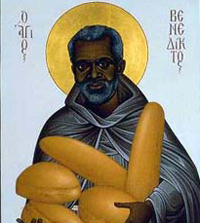 |
|
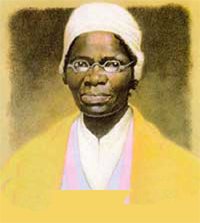 |
| St. Benedict the Black |
|
Sojourner Truth |
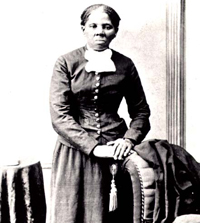 |
|
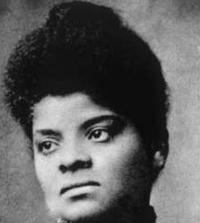 |
| Harriet Tubman |
|
Ida B. Wells |
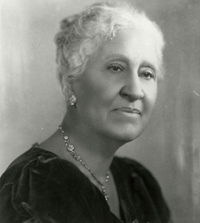 |
|
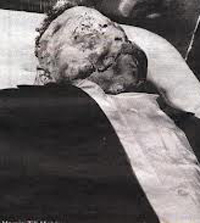 |
| Mary Church Terrell |
|
Emmett Till |
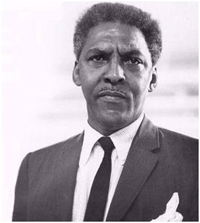 |
|
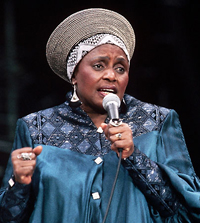 |
| Bayard Rustin |
|
Miriam Makeba |
 |
|
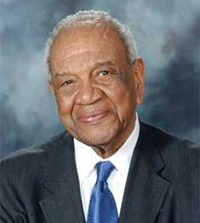 |
| Nelson Mandela |
|
Gardner C. Taylor |
*Today's main image of Dr. Martin Luther King Jr. in a hoodie, was produced by graphic artist Nikkolas Smith, after the verdict in the Trayvon Martin case.
X. Songs to Accompany This Sermon
A. Well-known Song(s)
- What Shall I Render? By Darius Brooks and Margaret J. Douroux
- This Little Light of Mine. Traditional
- What Would You Do? By Shirley Caesar, Jeff Krassner, Michael E. Mathis, Bernard Sterling, and Dottie Sterling
- If I Can Help Somebody. Words and Music by A. Bazel Androzzo. Arr. by Kenneth Morris
B. Modern Song(s) (Written between 2005–2012)
- I Need You to Survive. By David Frazier
- My Life, My Love, My All. By Kirk Franklin
- Praying for You. By William Murphy and Larry Nix
C. Congregational Song(s)
- I Am on the Battlefield for My Lord. By T. V Banks. Arr. by Joseph Joubert
- I Will Trust in the Lord. Spiritual
- Hold to God's Unchanging Hand. By Jennie Wilson. Arr. by Stephen Key
D. Liturgical Dance Music
- Soldier On. By Kurt Carr
- Go Get It. By Erica Campbell, Tina Campbell, and Warryn Campbell
E. Song(s) for the Period of Prayer
- I Look Like You (When I Worship). By Keith Cistrunk, Israel Houghton, Aaron W. Lindsey, and Hart Ramsey
- Perfect Peace. By Rudolph Stanfield
F. Sermonic Selection(s)
- Use Me Lord. By James Cleveland
- Thy Will Be Done. Traditional
- Keep Hope Alive. By Donald Vails. Arr. by Nolan Williams Jr.
G. Benediction Song(s)
- Didn't You Know. By Donnie McClurkin
- Releasing My Faith. By Charles Jenkins
- We've Come This Far by Faith. Text and Tune by Albert A. Goodson
XI. Videos, Audio, and/or Interactive Media
XII. Books to Assist in Preparing Sermons, Bible Studies, and/or Worship Services Related to Celebrating Our Saints
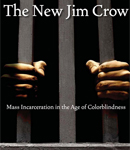 |
Alexander, Michelle. The New Jim Crow: Mass Incarceration in the Age of Color Blindness. New York, NY: The New Press, 2011. |
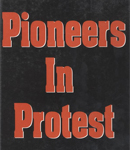 |
Bennett, Lerone, Jr. Pioneers in Protest. Chicago, IL: Johnson Publishing, 1968. |
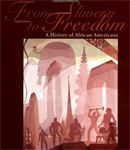 |
Franklin, John Hope. From Slavery to Freedom: A History of African Americans. New York, NY: Alfred A. Knopf/Random House, 1947, 1956, 1967, 1974, 1980, 1994, 2000. |
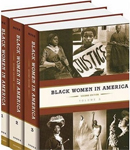 |
Hine, Darlene Clark. Black Women in America, 3 vols. New York, NY: Oxford University Press, 2005. |
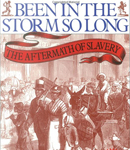 |
Litwack, Leon. Been in the Storm So Long: The Aftermath of Slavery. New York, NY: Random House, 1980. |
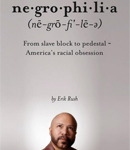 |
Rush, Erik. Negrophilia: From Slave Block to Pedestal—America's Racial Obsession. Washington, DC: World Net Daily, 2010. |
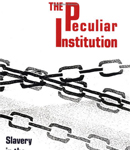 |
Stamp, Kenneth Milton. The Peculiar Institution: Slavery in the Ante-Bellum South. New York, NY: Vintage/Random House, 2nd ed., 1989. |
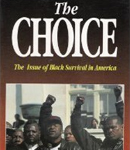 |
Yette, Samuel F. The Choice: The Issue of Black Survival in America—The Extermination of the Black Man in America. New York, NY: Berkley Books, 1996, 5th edition. |
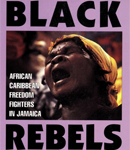 |
Zips, Werner, Franklin W. Knight, Michael Dash, and Shelley L. Frisch (Translators). Black Rebels: African Caribbean Freedom Fighters in Jamaica. Princeton, NJ: Markus Weiner Publishers, Incorporated, 1998. |
Books for Children
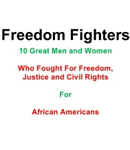 |
Freedom Fighters: 10 Great Men and Women Who Fought For Freedom, Justice and Civil Rights for African Americans. Suitable for grades 2–4. This is a free downloadable book that can be found at http://www.africanamericanhistoryplace.com/Freedom_Fighter_Download.html |
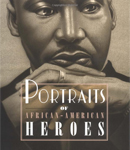 |
Bolden, Tonya. Portraits of African-American Heroes (for ages 8 through high school). New York, NY: Dutton's Children's Books/Puffin Publishers, 2003. |
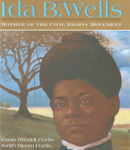 |
Fradin, Judith Bloom and Dennis B. Fradin. Ida B. Wells, Mother of the Civil Rights Movement (for children 11 and up). New York, NY: Clarion Books, 2000. |
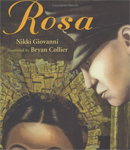 |
Giovanni, Nikki and Bryan Collier. Rosa. New York, NY: Henry Holt & Co., 2007. |
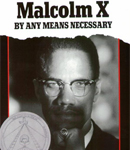 |
Myers, Walter Dean. Malcolm X: By Any Means Necessary. New York, NY: Scholastic Books, 1993. |
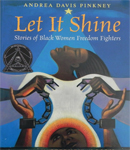 |
Pickney, Andrea Davis. Let It Shine: Stories of Black Women Freedom Fighters (for 9–12 year-olds). Orlando, FL: Harcourt Brace, 2001. |
XIII. Notes for Select Songs
A. Well-known Song(s)
- What Shall I Render? By Darius Brooks and Margaret J. Douroux
Location:
The Mississippi Mass Choir. God Gets the Glory. Jackson, MS: Malaco, 1991.
- This Little Light of Mine. Traditional
Location:
Franklin, Aretha. Divas of Gospel: Reach for the Heavens. Los Angeles, CA: Fuel 2000, 2007.
- What Would You Do? By Shirley Caesar, Jeff Krassner, Michael E. Mathis, Bernard Sterling, and Dottie Sterling
Location:
Caesar, Shirley. I Remember Mama. New York, NY: Sony, 1992.
- If I Can Help Somebody. Words and Music by A. Bazel Androzzo. Arr. by Kenneth Morris
Location:
Zion Still Sings for Every Generation. Nashville, TN: Abingdon Press, 2007. #140
B. Modern Songs(s) (Written between 2005–2012)
- I Need You to Survive. By David Frazier
Location:
Walker, Hezekiah & The Love Fellowship Crusade Choir. Praise Your Way Out: Songs of Inspiration and Hope. New York, NY: Verity, 2009.
- My Life, My Love, My All. By Kirk Franklin
Location:
Setlist: The Very Best of Kirk Franklin Live. Inglewood, CA: Gospocentric, 2011.
- Praying for You. By William Murphy and Larry Nix
Location:
Murphy, William. God Chaser. New York, NY: Verity, 2013.
C. Congregational Song(s)
- I Am on the Battlefield for My Lord. By T. V Banks. Arr. by Joseph Joubert
Location:
African American Heritage Hymnal. Chicago, IL: GIA Publications, 2001. #480
- I Will Trust in the Lord. Spiritual
Location:
African American Heritage Hymnal. #391
- Hold to God's Unchanging Hand. By Jennie Wilson. Arr. by Stephen Key
Location:
African American Heritage Hymnal. #404
D. Liturgical Dance Music
- Soldier On. By Kurt Carr
Location:
Carr, Kurt & The Kurt Carr Singers. Bless This House. New York, NY: Verity, 2013.
- Go Get It. By Erica Campbell, Tina Campbell, and Warryn Campbell
Location:
Mary, Mary. Go Get It. New York, NY: Columbia, 2012.
E. Song(s) for the Period of Prayer
- I Look Like You (When I Worship). By Keith Cistrunk, Israel Houghton, Aaron W. Lindsey, and Hart Ramsey
Location:
Ramsey, Hart. Next Now! New York, NY: Entertainment One Music, 2013.
- Perfect Peace. By Rudolph Stanfield
Location:
Pugh, Earnest. Perfect Peace. New York, NY: Worldwide Music, 2012.
F. Sermonic Selection(s)
- Use Me Lord. By James Cleveland
Location:
I Don't Feel Noways Tired. Jackson, MS: 601 Music, 1990.
- Thy Will Be Done. Traditional
Location:
Jackson, Mahalia. In Concert Easter Sunday, 1967. New York, NY: Legacy, 1967.
- Keep Hope Alive. By Donald Vails. Arr. by Nolan Williams Jr.
Location:
African American Heritage Hymnal. #405
G. Benediction Song(s)
- Didn't You Know. By Donnie McClurkin
Location:
Live in London and More…. New York, NY: Verity, 2000.
- Releasing My Faith. By Charles Jenkins
Location:
Jenkins, Charles & Fellowship Chicago. The Best of Both Worlds. Brentwood, TN:
Inspired People, 2012.
- We've Come This Far by Faith. Text and Tune by Albert A. Goodson
Location:
African American Heritage Hymnal. #412
|

